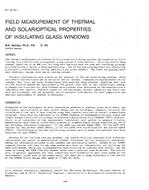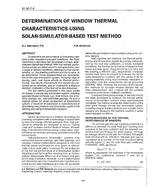Until recently fire management and smoke control systems (FM&SCS) provided only the minimum functionality necessary for life safety in buildings. Because of this it was difficult to understand what happened in a building during fire conditions. For example, during a real a]arm, users needed to know if the automatic control system performed the necessary functions. Since the FM&SCS did not provide feedback, it was difficult for system operators to understand what happened in a building during fire conditions. The resultant trend was to simplify the automatic smoke control sequences (“keep-it-simple” concept) so that feedback wasn’t necessary function.
In parallel, the research and experimental testing of smoke movement in buildings continued, and it was found that smoke containment is a dynamic process and building conditions vary during fire situations. Research was also conducted on the use of elevators, not only for fire fighting, but also for evacuation of the handicapped and elderly. At the same time rapid development of the microelectronic technology took place to provide cost-effective solutions.
Today, with the emergence of new sensor technology and with the opportunities of distributed processing, a systems approach to fire and smoke control may provide the tools to resolve problems with existing systems. HVAC control systems designed to work effectively with FM&SCS can now provide a cost-effective and highly reliable total system approach to life safety.
Units: I-P
Citation: Symposium, ASHRAE Transactions, 1988, vol. 94, pt. 1, Dallas, TX
Product Details
- Published:
- 1988
- Number of Pages:
- 15
- File Size:
- 1 file , 2.1 MB
- Product Code(s):
- D-DA-88-13-3


